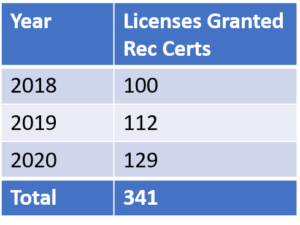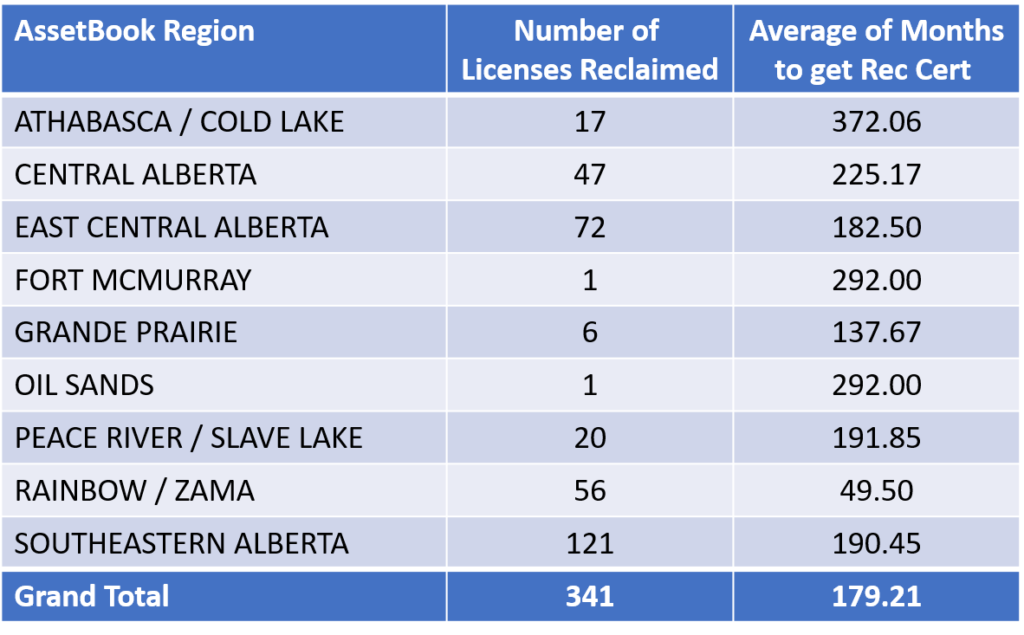Word to the Wise: Spotlight on reclamations from the Orphan Well Association
October 27, 2020
Each week, XI Technologies scans its unique combination of enhanced industry data to provide trends and insights that have value for professionals doing business in the WCSB. If you’d like to receive our Wednesday Word to the Wise in your inbox, subscribe here.
Over the past month, we’ve been highlighting the reclamation work done in Western Canada to demonstrate how the industry addresses its environmental liabilities. Reclamation work is some of the most important liability work environmentally, as it signifies the land is ready to return to its previous state — the subsoil has been recontoured, the topsoil replaced, and the vegetation is re-established. In previous posts, we detailed how operators have been tackling their reclamation obligations over the past six months. This time, we wanted to spotlight how the Orphan Well Association (OWA) contributed to Alberta’s environmental commitments.
In last week’s post, we mentioned that the OWA’s work in reclaiming wells, facilities and pipelines in Alberta tied them for the fifth most reclamations by any operator in Western Canada over a six-month span. This week, we’re going to take a longer-term look at the OWA and examine their reclamation work done since 2018.
In response to our recent articles on reclamations in the WCSB, we received a list from an OWA representative of their reclamation work. The list contained 348 licenses, 341 of which were reclaimed wells, with the remaining 7 being facilities. The following are the well totals broken down by year, revealing an uptick year-over-year (particularly when one considers that work in 2020 is not yet done). This seems to coincide with a significant uptick in OWA funding, with annual expenditures in the last couple of years — from $22.9 million in 2018, 26.9 million in 2019, to $50 million in 2020.

Note: These totals reflect those licenses which have been granted reclamation certifications by the AER.
The OWA also has 30% of their total inventory of 3566 sites for reclamation currently in vegetation monitoring only or final certification process, (click here for details).

We ran these 341 well licenses through our proprietary cost models to get an estimate of how much liability was taken off the books with this work.
An interesting thing to look at with these licenses is the average time it takes for a well to move from abandoned to reclaimed, illustrating the importance of reclamation work in finalizing environmental site closure. We did this by comparing the dates of the rec certifications with the abandonment dates provided by the AER (note: it is uncertain in this analysis who performed the abandonment work, but in most cases, it was likely a previous operator). We’ve taken these dates and averaged them by region.

As you can see, it’s not uncommon for liabilities to sit abandoned for a long time before they’re fully reclaimed, particularly in the subset that find their way into the OWA. These ignored wells not only accrue surface rental costs as they sit dormant before making it into the purview of the OWA, but can also pose a small risk of contamination or other public health concerns.
These numbers underscore how important the work done by the OWA is for the industry and Alberta as a whole. It shows that the industry commitment to fund the OWA is vital and highlights why producers must prioritize abandonments and reclamation long before assets ever become orphans.
This data was calculated using XI’s liability software module, AssetBook ARO Manager. ARO Manager is the only standardized tool for estimating and monitoring asset retirement obligations in Western Canada’s oil and gas sector. You can learn how one company increased their accuracy by switching from spreadsheets to AssetBook ARO Manager, you can download a case study. To learn how XI’s ARO Manager can help with the planning and reporting of liability management, visit our website or contact us for a demo.